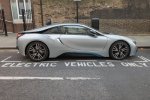Can I Hook the Electric Motor Straight to the Rear Differential?
by Mike Avila
(Turlock, California)
I am considering converting a 4 door (Crew Cab) pick-up like 2000-2004 Nissan Frontier/Toyota Tacoma/Ford Ranger/Chevy S-10 etc.. & have a question that I havn't been able to get a straight answer on.
I'd like to hook an AC motor straight to the rear differential.
Reasons:
(1) It would save a few hundred pounds of transmission;
(2) Make a small pick-up search easier with not having to just look at manual transmissions;
(3) allow me to make more money on selling the ICE parts;
(4) allow more overall power to make it to the rear wheels without all the wasted energy of going through the tranny;
(5) Allow more room in the engine compartment for batteries therefore making weight distribution easier;
(6) Allow my wife & other non-stick driving people to drive it;
(7) Not having a transmission means one less ICE component to have to work on & find parts for later on.
The answers I've found said that it would be like taking off in 4th gear all the time, this is true for an average vehicle with about 3.73/1 rear differential ratio but there are many rear axles out there with ratios of 5.71/1 & greater therefore making it closer to taking off in 2nd or 3rd gear right?
So my questions are...
(1) Is my theory of using about a 5.71/1 or more gear ratio on the rear axle a good one?
(2) I'd prefer an AC motor but should I be considering a DC motor for reasons of low rpm torque? From what I heard AC motors have less low rpm torque but greater range of rpm's up to 10,000 so it might help my not being able to shift situation.
(3) Would road vibration straight on to the motor be bad for it? Would it be better to have the motor a little forward more with a drive line to the differential?
(4) Would adding rear independent suspension from another vehicle help out the idea about motor vibration & lighten it up but allow less rear weight carrying capacity?
(5) If I had to would changing the rear tire size to a smaller one help the lack if any of low rpm torque?
Hi, Mike -
You must be lost, darlin'; )
Allow me to point you in the right direction: You're looking for the EV Discussion List, where you can chat with extremely smart, gifted - not to mention quite handsome - experienced electric car converters about torque, gear ratio, drag coefficient, and cathode chemistry to your heart's content. Your question(s) are bound to put the cayenne in somebody's cocoa over there.
If you can't find a satisfactory map, however, it may be because you're in uncharted territory. Sometimes you gotta strap on them Nikes and just DO it. What's the worst that could happen?
Remember, the lousiest running EV will carry your butt further without petrol than the finest theoretical construct; )
Regards,
Lynne

